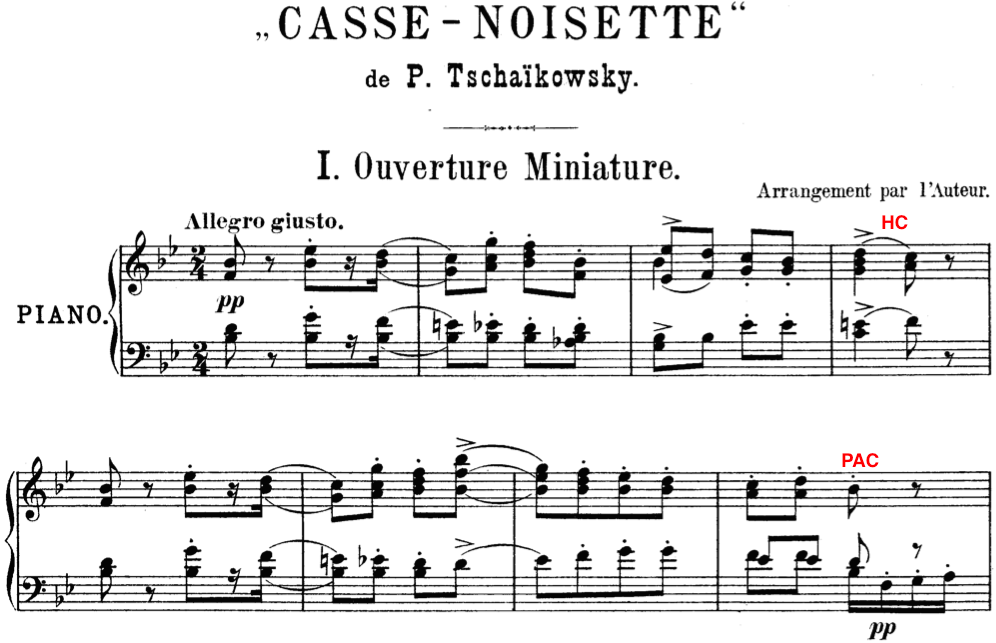
HARMONIC EXPANSIONS
CHAPTER 6: PERIODS AND CADENCES
6.2 Perfect Authentic and Half Cadences in Parallel Interrupted Periods
 |
 |
 |
 The Dallas Symphony Orchestra in 2015. Jaap van Sweden, Music Director |
The two phrases above, from Beethoven's Symphony No. 9, Movement 4, begin identically but end differently. The first phrase begins on I, as expected, but ends with V, unlike previous phrases on these pages. The anticipation that this dominant creates--that it will eventually move to I--is satisfied only after a half-note pause in the melody and a repetition of the first part of the first phrase. When the second phrase finally does end with V -I, the anticipation set up at the end of the previous phrase is satisfied.
The pause on V at the end of phrase 1 is called an interruption of the Fundamental Harmonic Progression I - V - I. The interruption is notated below the staff in reference to the harmonies with a double slash (//). There is also a melodic interruption at the end of phrase 1: the pause and repetition interrupt the common large-scale melodic movement from scale degrees 3 (at the beginning) to 2 (end of phrase 1) to 1 (end of excerpt). So another double slash appears above the staffs at the end of phrase 1 in reference to the melody. To summarize, this example demonstrates an interruption and restart which have expanded a single phrase of music into two.
Some definitions will help explain the relationships between pairs of phrases such as the one above:
- A cadence is the last chord or chords of a phrase. Five kinds of cadences will be presented in this chapter, two of which are in the example above and defined below. When comparing cadences, those which sound more conclusive are called stronger and those which sound less conclusive are called weaker.
- A perfect authentic cadence (PAC) ends V(7) - I with the tonic as the last note in the top voice. The end of the second phrase above is a perfect authentic cadence. This is the cadence which has been used in all 4-part examples and dictations thus far. It is the strongest of the five cadences and is by far the most common ending for a piece of music.
- A half cadence (HC) ends on V. The first phrase above ends with a half cadence.
- A period is a pair of phrases in which the second cadence is stronger than the first. This relationship between the two cadences makes the phrases sound like a unit. All the music in the illustration above forms a period.
- The antecedent is the first phrase of a period. Sometimes it is compared to a question in a conversational question and answer, and sometimes, when the antecedent ends with the dominant, its cadence sounds like an interruption.
- The consequent is the second phrase of a period. It is sometimes thought of as an answering phrase. Its cadence must be more conclusive than the antecedent's cadence.
- A parallel period is a period in which both phrases begin the same or very similarly. The music at the top of the page is a parallel period.
- A contrasting period is a period in which the two phrases are different. See examples on page 6.4.
|
The video to the left shows a parallel period with a half cadence (HC) and a perfect authentic cadence (PAC).
|
The following excerpt from the overture to Tchaikovsky's Nutcracker Suite also is a parallel period with half and perfect authentic cadences.
 |
 |
 |
 |
 |
Comments? Click here. |



